Archive
2021
KubaParis
Too fast too knight

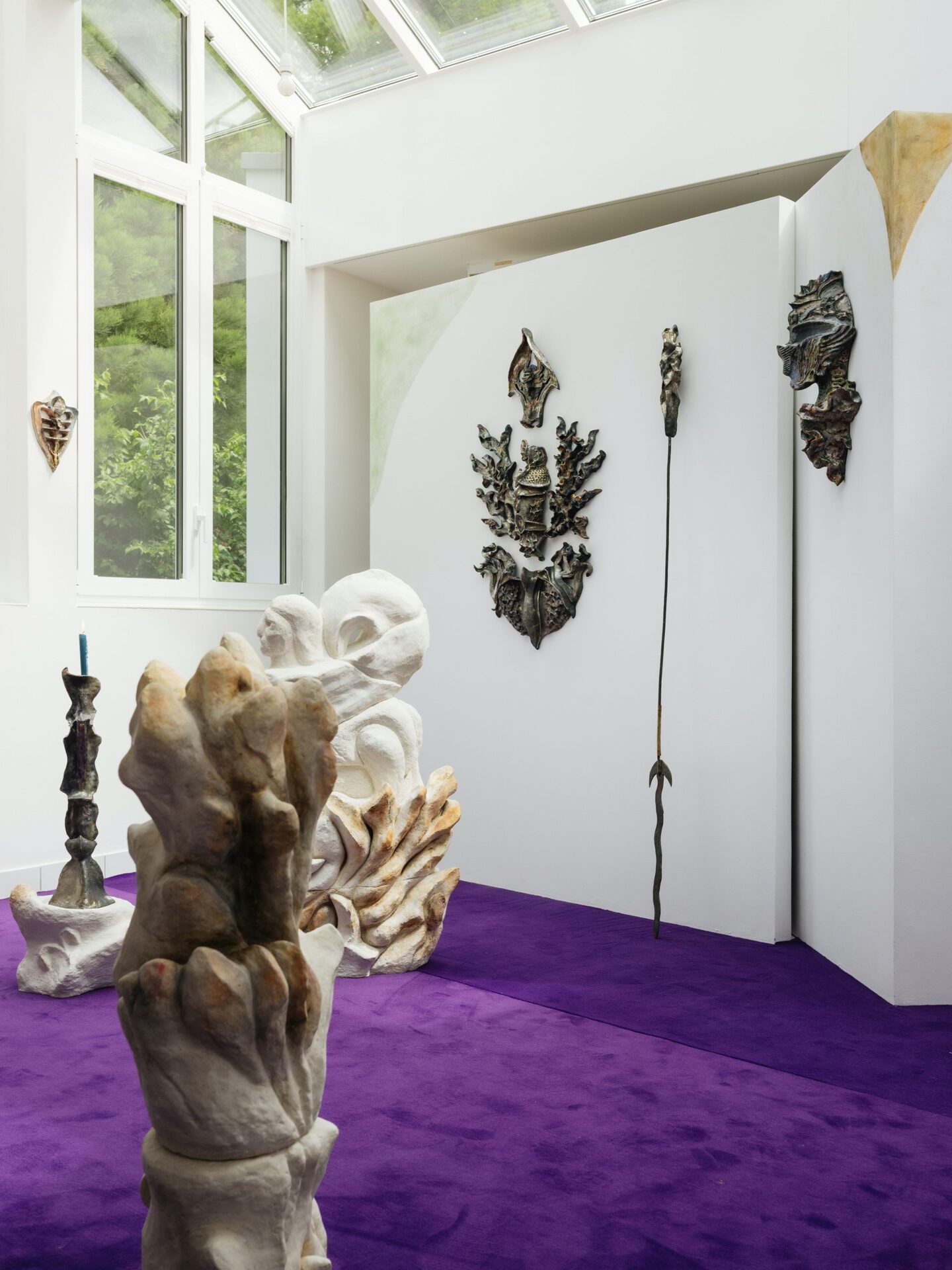

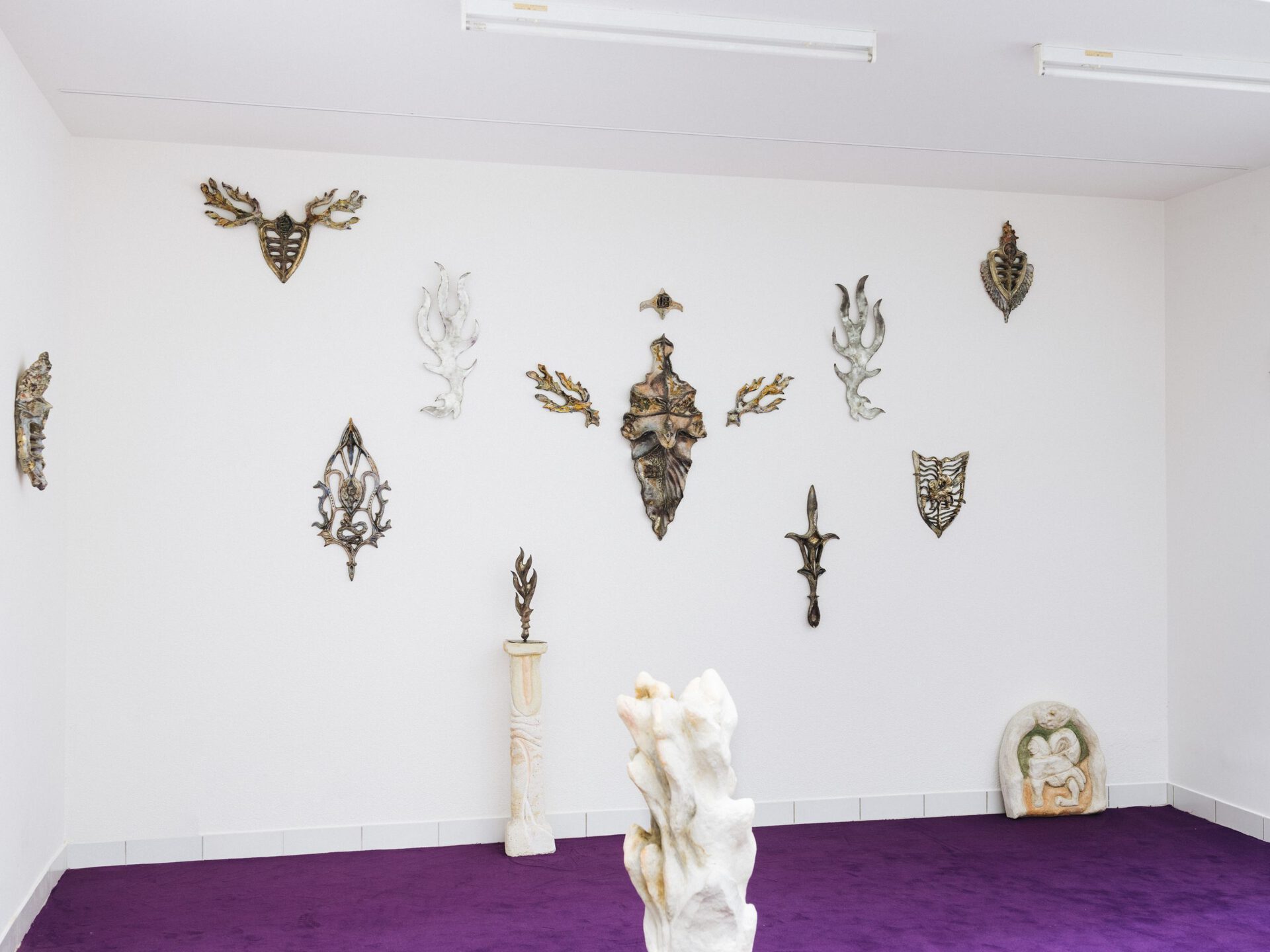




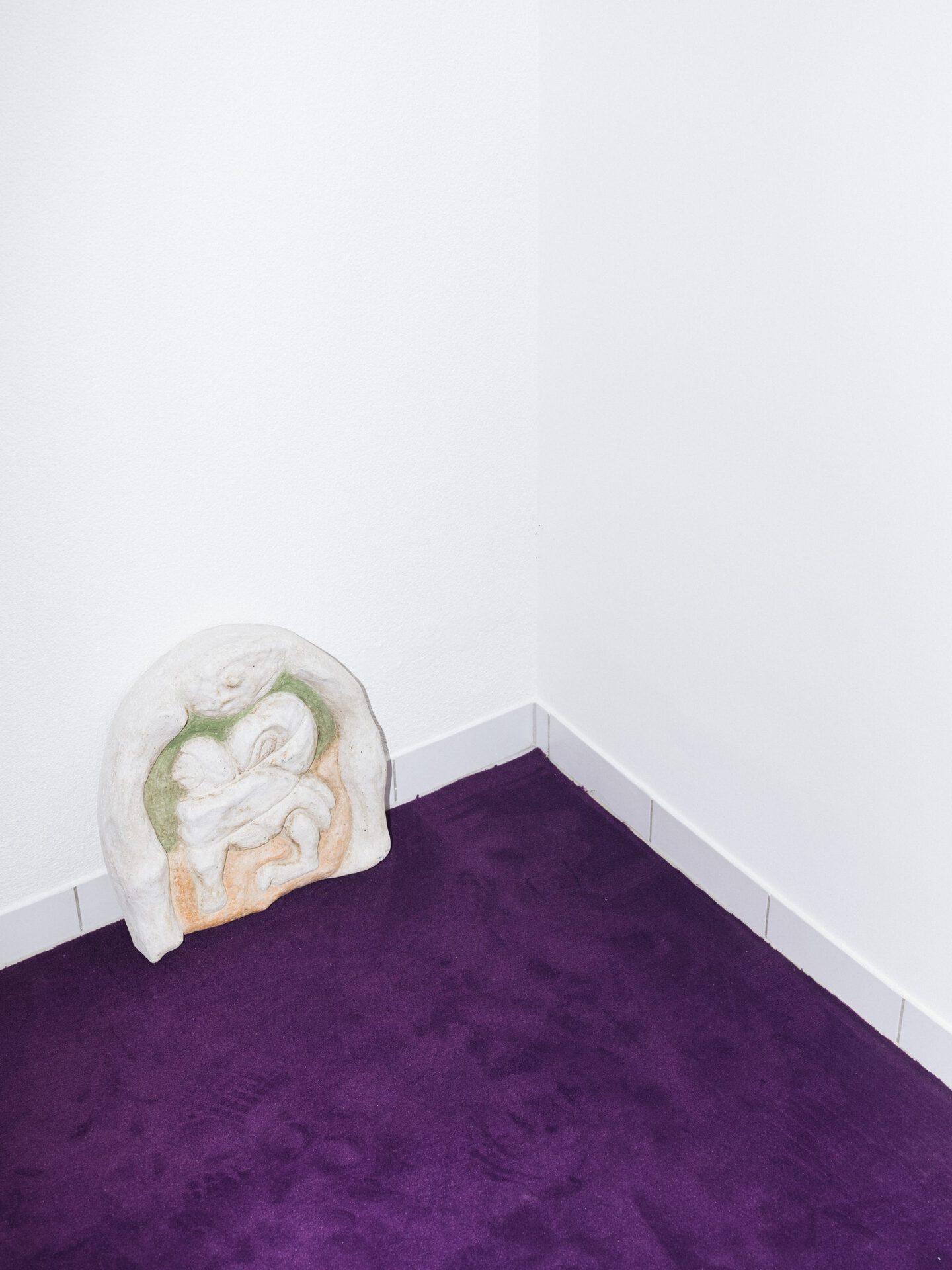

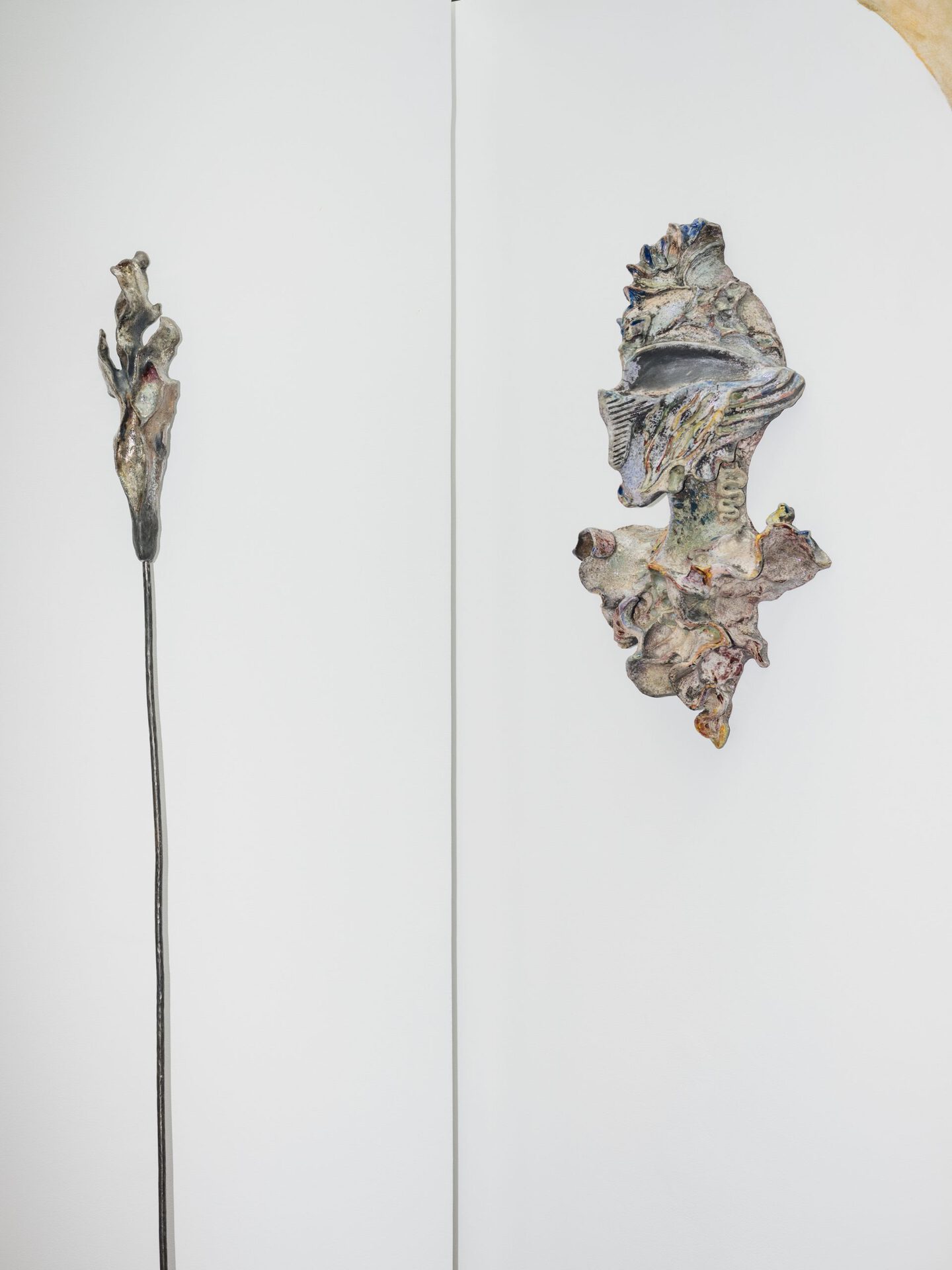


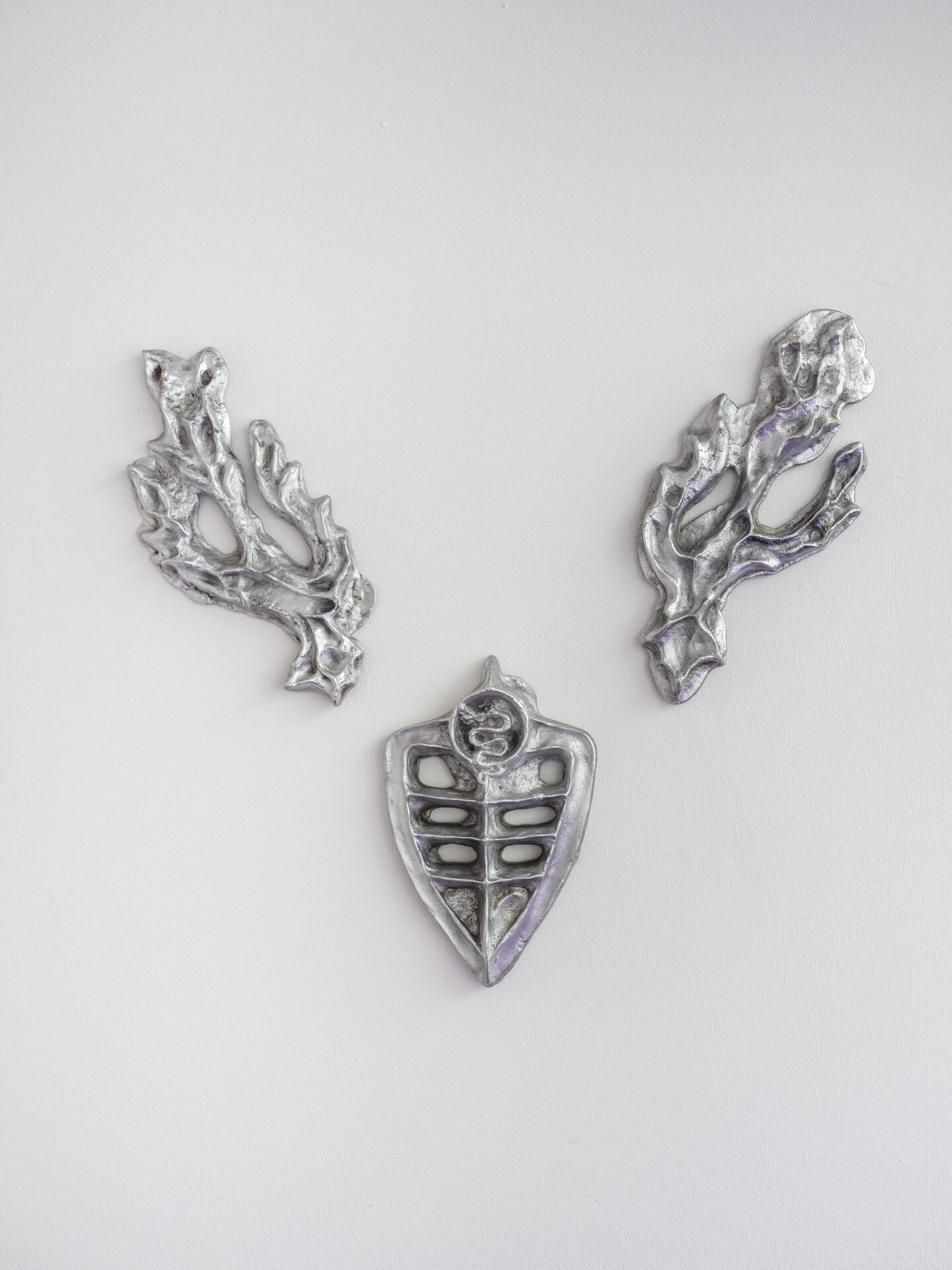
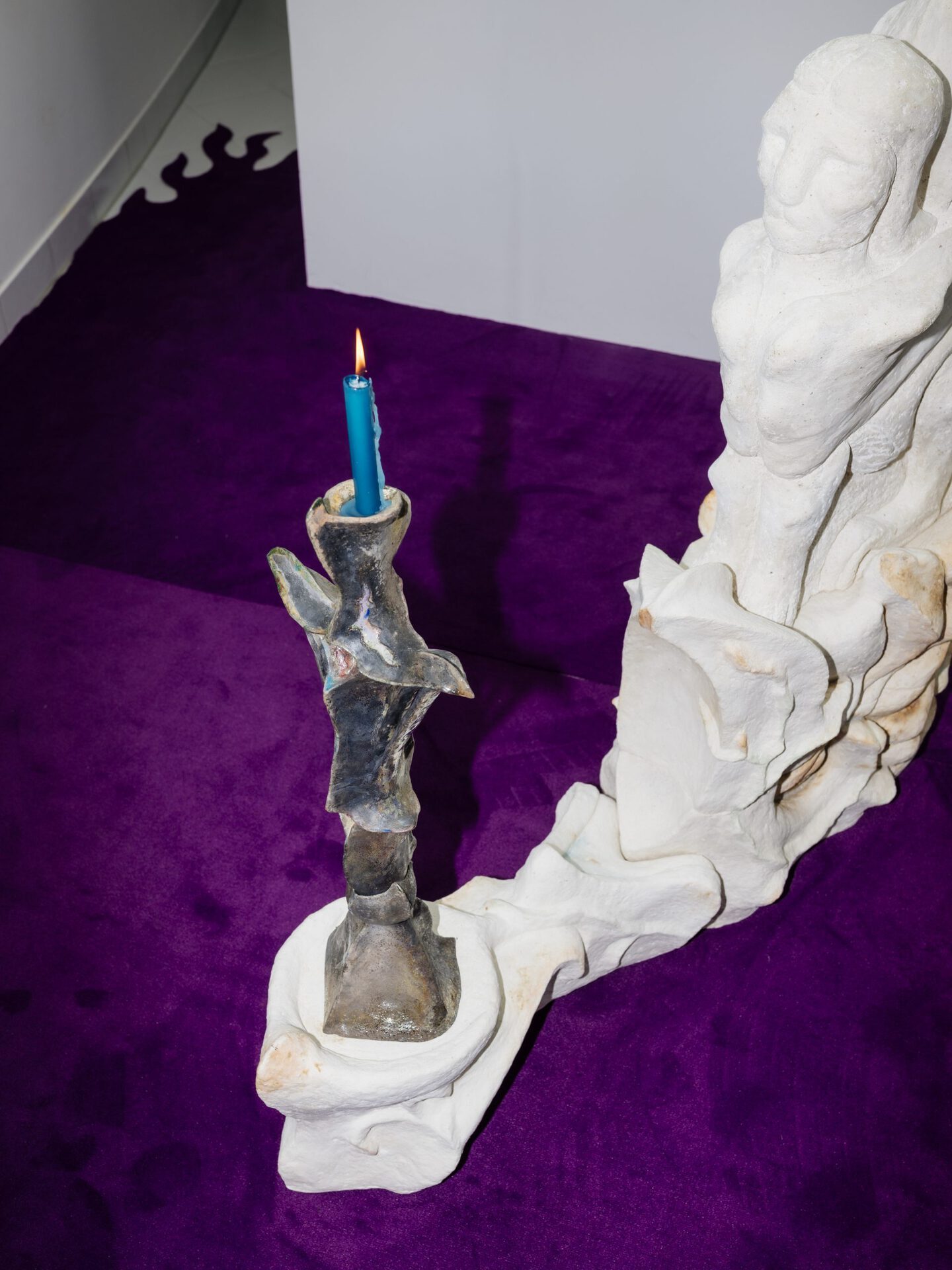
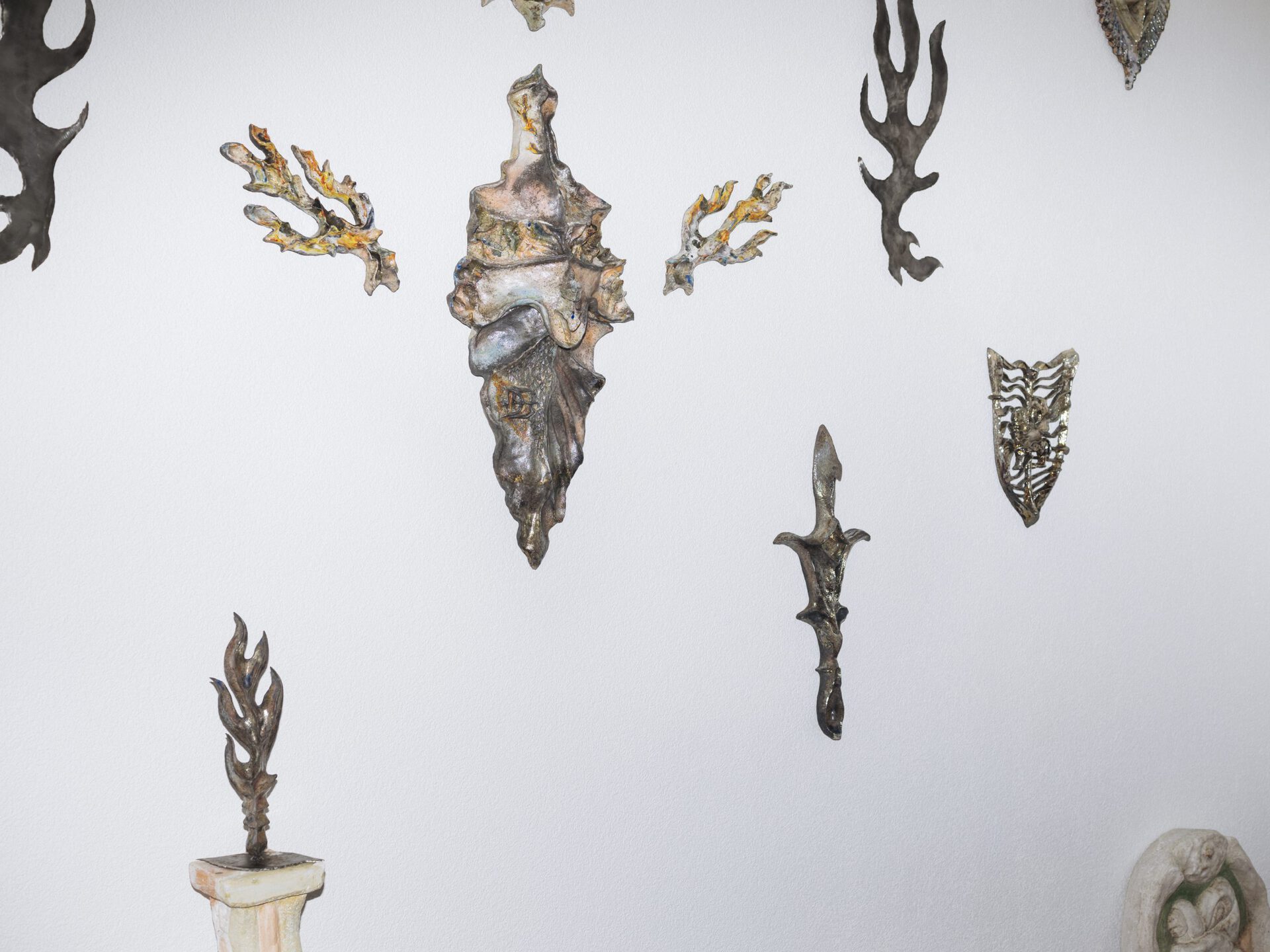

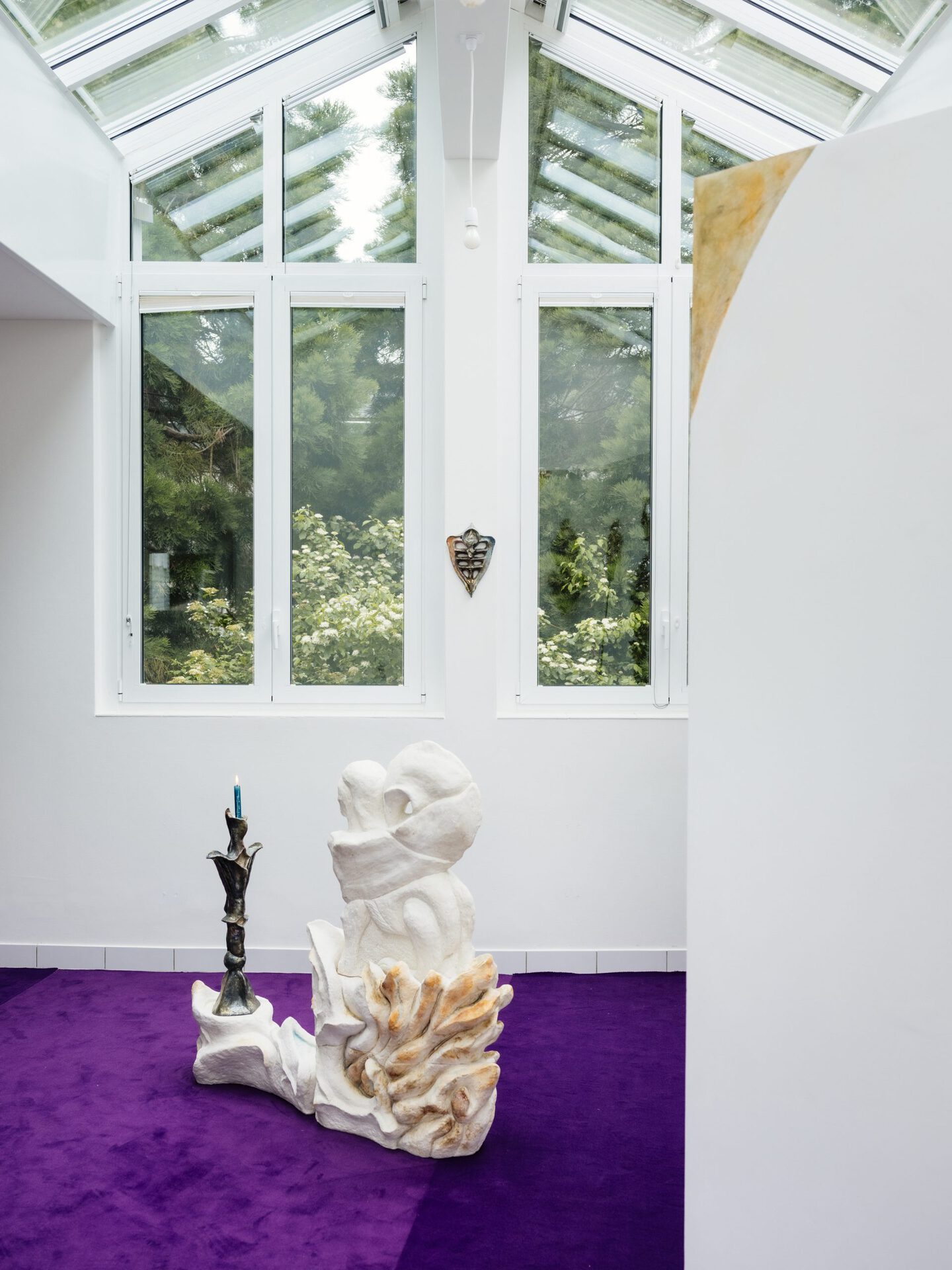
Location
A.ROMYDate
04.06 –30.07.2021Photography
Philip FroweinSubheadline
Show details Bella Hunt & DDC Too fast too knight Opening date : 5 June 2021 Closing date : 31 July 2021 artist instagram: @bellahuntddc Text by Daniel Fuller (@fuller315) Venue details A.ROMY 53, Tramstrasse 8050 Zürich www.aromygallery.com Contact: Alexandra / [email protected] gallery instagram: @alexandra_romy Photo credits Philip Frowein (@philipfrowein)Text
My son is three years old. His favorite thing in the world to do is to take his Hot Wheels cars to the beach and bury them just beneath the surface of the sand. He brushes a layer of sand aside and covers the vehicles so nothing is visible from above. There are no markers, no assurances of finding anything before the lights go out. Then we swim, play in the waves, make sandcastles ... paradise, a beach day. Then comes the search. Watching our young archaeologist sift and excavate the grains of sand, you can see in the quick succession of real-time Ekman’s seven emotional expressions that are universal to all people: fear, disgust, anger, contempt, sadness, surprise, happiness. The immensity of the beach sets in. There are no words spoken, just twists and turns, approaches from fresh angles. Momentum swings wildly but never stops. This is genuine suspense. Everything lost, everything found.
When the search party completes the final extraction, we get to work. These little industrial- made cars are then cleaned, identified, and processed as though they were archaeological remains. First, our son uses a brush to clean grains of sand from the undercarriage, behind the wheels, and if there are open windows, the dashboard. He submerges the cars into a makeshift washing station (formally a sandcastle mold). The process is painstaking and precise. Afterward, we walk back to our beach rental with a sense of contentment, the thrill of a job well done, knowing a big piece of who he is at this young age has been preserved. Tomorrow we will do it all again.
Daniel Fuller
Interview
Daniel Fuller
Would you consider Bella Hunt & DDC “memory workers?”
That term is great. Definitely, like Nicolas Bourriaud once said, now that Google Map has discovered the whole world, the only uncharted space is history and in that sense it’s a great material.
Bella
History does not lie through material, I was trained by art history. As Alois Riegl was interested in, in folk art you can understand underground history, precisely because it is material. We were trained in art history by medieval archaeology. We are fascinated by the history of the masons, in the great history or in the small.
Dante
Objects in a way are less definite and speak to the unconscious of each individuals.
DF
How do you define monument?
Bella
This question is interesting because the monument is really a way of communing. I spoke earlier of Riegl, who wrote about the value of monuments: historical value, value of antiquity... In the same way, we think that the vocation of a monument is that of a symbol that speaks to all. We often create our works as popular altars to commune and commemorate. The monument is finally something very folk.
Dante
The monument is like folk music, you can listen to it or look at it from a distance and enjoy it, or get closer to it and understand it more deeply.
DF
Are monuments meant to be timeless?
Bella
What we like about monuments is that they draw from across time and eras. What concerns us is to be able to speak to other eras, and to be able to address those who will be there when we are dead. We have made many altars for the dead, for the future. This subject of funerary and transmission is central to our work.
Dante
It is a way of dialoguing with history, in our process of manufacture we try to make vestiges at the same time old, very old even, and contemporary, to see futuristic. We do not want to be in the temporal rupture. What we do are temporal concretions, where past, present and future are found.
DF
Are you familiar with the 1996 biopic Basquiat? It was Julian Schnabel’s directorial debut and a super beautiful and at times of weird film. There is a passage of dialogue in the movie that I think of often when thinking of your work.
Basquiat : I gotta get out of New York...
Andy Warhol : Hey, we could go to Pittsburgh! I kinda grew up there. They have this room with all the world’s famous statues in it, so you don’t even have to go to Europe any more... just go to Pittsburgh.
He was referring to Carnegie Museum ofArt’s the Hall of Architecture, with its collection of over 140 plaster casts of architectural masterpieces from the past. It opened in Pittsburgh in 1907 and with a collection of 144 architectural casts, 69 plaster reproductions of sculpture, and 360 replicas in bronze it is the largest architectural cast collection in the country. It is a strange sensation; you enter this great hall and are immediately confronted by replicas of the greatest structures on earth. It’s overwhelming. Your installations/interventions vacillate, sometimes they are loud and densely populated, sometimes they feel more subtle, more imbedded into the architecture in which they are placed. Can you talk about these various strategies?
Bella
We always want to dialogue with the space, and instead of disrupting the story, we prefer to insert ourselves inside. We always pay small tributes and we see ourselves as links in a chain. We produce things for those who come after us. These are global installations, which must evoke another return to time, and which are always produced according to a context. The fact that we change forms, that we have variable geometries and that we collaborate with artists, is that we always want movement.
Dante
«The meaning of life is to understand where you come from, what history, what family, what city, what country» as Dante Alighieri says. Our dialogue is visceral and spontaneous, but it is embodied differently depending on the place and the desire. To come back to the Warhol biopic, we have this fantasy of being surrounded by all the sculptures and all the past works, at the same time.
Bella
We pay homage to all popular and historical culture and time is our material. We’re going to wander into Byzantine art, medieval art, and why not into tuning. In Zurich, we realized that there is a lot of gothic art, in a friction zone. We wanted to talk about the merging of time and cultures. That’s why for this exhibition we are inspired by parade armors and tuned cars. They are all parade objects, not really functional. We create improbable meetings.
Dante
The human condition 1,000 years ago may not have been so different from now, so we appreciate these porosities. And it allows us to talk about things that we can’t express in words, that’s what’s very strong about art.
Bella
Man has always needed to make objects and to transmit them, for his senses and for others.
DF
Can you tell us more about how a Bella Hunt ddc exhibition takes shape? Who is the collective, how do you go from research to production?
Bella
I think there is always fantasy that we want to explore and it goes in a lot of directions. We look at history of art, pop culture, sometimes music. There is a big discussion between us, the sculpture and the exhibition are like a tennis match, with a lot of exchange.
Dante
Our sculptures are conversation. It’s like a DJ who puts something undefined back on stage and refines it during the dialogue. Sometimes we push the most fanciful to get the most visceral out of it, to expose the work and keep the essential. Each encounter counts, as I suppose all artists do. We try that our pieces are the result of the human and intellectual history of the studio. They are remnants of our little history.
DF
Is there anything more mysterious than an empty room?
Bella
Empty rooms are scary. Emptiness is death. We need to fill, «horror vacui» as the Romans used to say for the ornament.
Dante
As a child, I would often have a nightmare where I was locked in a small, empty, neon-lit room. I couldn’t speak or move, and then I would wake up. I think we prefer full rooms.
DF
Do you see the exhibition venue as a stage? Is the whole world a prop?
Bella
Unconsciously for sure. It’s totally intuitive, but we want you to be able to walk around our exhibitions and have it go in different directions. It’s a total work of art. We have a global vision of art. The door handles are as important as the paintings. As a curator, it seems normal to me to see things on a global level.
Dante
What we like is that the pieces can spark the imagination. There is a clear orchestration side to Bella, which starts from the large to the small. My approach is less defined, I start from the small, I make a piece, then another, and together they become an installation. It is this dialogue between us that escapes us and makes our ensembles.
Bella
We talk to all the senses too. We produce in two because it escapes us. We create a world where each one plays its part.
Dante
We like it when this show escapes us and takes its autonomy.
DF
Can history be transportable or transferable? With this exhibition in Switzerland, can you speak about crossing boarders?
Bella
For us crossing borders is always a journey toward another specific culture. Through specific histories we want to find the eternal. That’s why in historical forms we always look for what unites: popular piety, soccer, heraldry, tuning...
Dante
There is a story before that gives birth to the works and the exhibitions. They allow people to tell their own stories when they see them. They are all personal to each person. Our works are vestiges, traces of stories and history. They are the materials of history, which we consciously or unconsciously tell.
DF
Is architecture a sport?
Bella
Yes, in fact with us there is a clear physical dimension. When architecture or creation remains on a human scale, it is clearly a sport.
Dante
We have a fantasy of the architecture of the time of temples and castles. That’s probably part of the reason why we make altars and arches. I also see architecture as a hobby, because for me it’s a bit like a child’s daydream, imagining a construction and putting it together to fit.
Bella
We want to remain on a human scale. We do not have this will of demonstration of power of the monumental and immense architecture. We are more in the commemoration.
DF
Who is the armor in your show meant to protect?
Bella
The armor in the exhibit is not meant to protect. We made ornaments. They are ornaments, intended for pomp and circumstance, to embellish. There has always been armor and we have always wanted to aestheticize it. It is easy to recognize French, Italian or Japanese armors... They are like car bodies, signs of recognition. It is an object, like the bodywork, which forces humility. As Boccioni said «a car is as beautiful as the Victory of Samothrace». It forces humility, because there are necessarily people who have put a lot of effort into making it.
Dante
Like all things that embellish, they protect a little from the outside. And then it is visceral, it is a reason on which we blocked, we wanted to explore it.
DF
Can you speak about your interest in art cars? Is this as an exploratory approach to public engagement? Bringing art directly to the people.
Bella
I love tuning and at the same time ancient armors. I have loved tuning since I was little. I realized that there is a dimension of popular creativity, it is an expression of modest creativity that is not expressed. It’s really folk art. That’s what I said above, the tuned car and the parade armor are part of the same parade fantasy.
Dante
Cars and especially old ones are objects of fascination. A bit like armor, they are tools, they have a shell, and they are decorative too. It’s no wonder that we are fascinated by them, because it’s the conjunction between art and folk. What we like is also that they are decorated functional objects.
DF
One of the greatest museums in the world is the Stax Museum of American Soul Music in Memphis, Tennessee. Through the 60s and 70s Stax Records changed music forever, releasing Southern soul, gospel, funk, and blues to masses. We are talking Otis Redding, Isaac Hayes, Sam & Dave, Rufus & Carla Thomas, Booker T. & the MG. a staggering 243 hits in the Top 100 R&B charts. Their main rival at the time was Motown. Motown was glitz, glamour, artist development classes on how to have more acceptable social skills. Stax was everything Motown was not. They referred to Memphis as the “guts” of America. They claimed it was the Mississippi River, that music (or America) starts out prim and proper at the top of the map, but as that river slowly rolls south, it picks up all that runoff, that sediment, that pollution. That’s where the grit, the rawness, the stripped-down, burning heart Stax sound comes from. It could never be clean; it could never be from the north. How does art change as you travel south in France?
Bella
Our cultures are often done against a backdrop of country or folk music. Dante loves American folk music deeply. I love Italian music for the same reasons. The south of France is an unorganized aggregate of historical sediments, made up of the waste products of history. A huge historical and syncretic concretion, like Marseille or Naples. Great history meets popular culture. It is the alliance of high and low.
Dante
Our sculptures are an amalgam, a sedimentation of history and stories. We would like our sculptures to be like a soul or folk song, with several levels of listening. Unconsciously, we try to touch the museum guard as well as the art critic. We are as much footballers as sculptors. I had an Alfa GT 2, something between a Mustang and an Italian car.
Bella
That’s why our works blend in with the monuments and architecture, we don’t mind that they are not the center of attention.
DF
How does the exhibition space communicate with you?
Bella
When it’s a white cube, we try to give it a soul and fill it with history, to shake it up, especially with a generous scenography. It must overflow. But above all, we like to dialogue with a place that has a history, especially in monuments.
Dante
In the white cube we fill the void.
DF
Is history ever true?
Dante
In contrast to Joe Rogan’s «100% bro», I think history is never 100% certain. It’s not the truth we’re interested in but the connection. The story is read in its mysticism, through artifacts and mysterious relics.
Bella
We always know that history is a construction, but for us is just a journey.
DF
In his autobiography, Valenciennes defender Jacques Glassmann said that in 1993 Olympique de Marseille captain Christophe Robert had asked him to forfeit the Marseille match the day beforehand. Three other Valenciennes players were asked to underperform in the match so that Marseille could stay fresher for their 1993 UEFA Champions League Final match against A.C. Milan, less than a week later. At least one player was found with F250,000, payment for “taking it easy.” In many ways this scandal was a massive downfall for Marseille: losing a title, financial penalties, being forced into relegation down to the 2nd division. Care to comment?
Bella
In a way, whatever happens, Marseille was punished like Naples. For both of us, the victory of Marseille in 93 was the same thing as Maradona in Naples, something that gives dignity to our city. We made an exhibition around Maradona two years ago. Soccer is a recurrent subject in our city, and especially Maradona.
Dante
This question makes me think of James Ellroy, who says in Tabloid «we must pay tribute to these obscure men who went beyond themselves in the course of history for the worst». 1993 is a bit like our Maradona: idolized but falling into drugs. Here we have a victory tarnished by shenanigans. 1993 in Marseille was a monument, a real communion. We made a sculpture of it, an Etruscan cup with big ears, like the Champions League cup.
Daniel Fuller